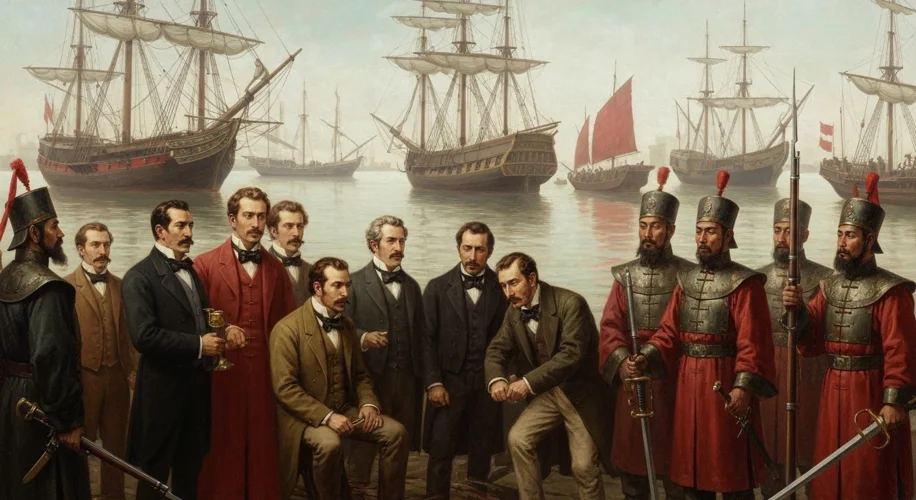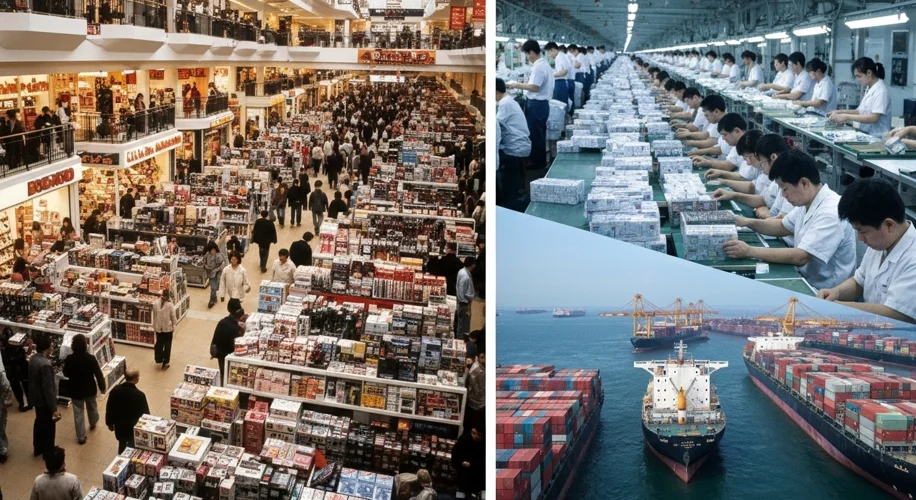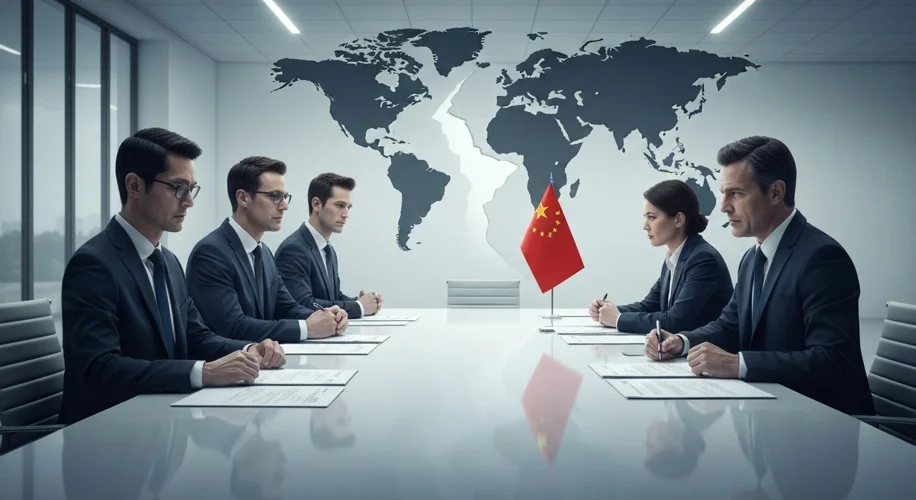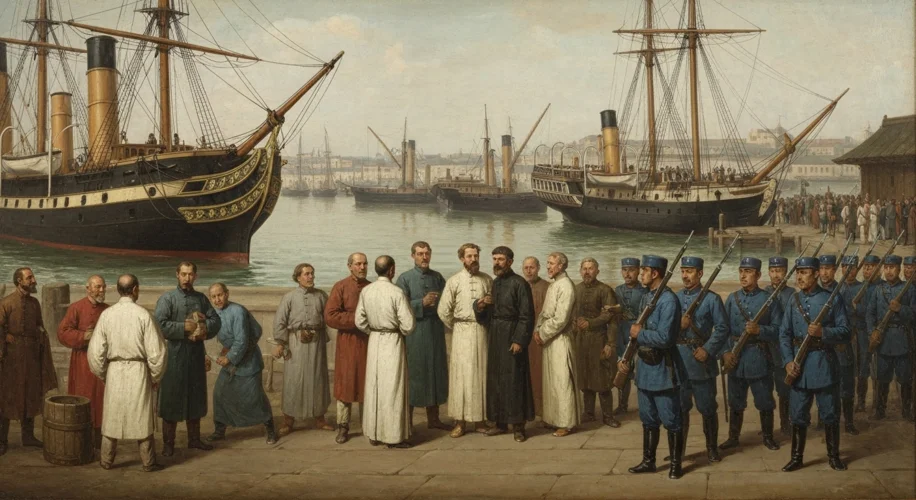The relationship between the United States and China is a tale as old as modern history, a complex tapestry woven with threads of cooperation, competition, and outright conflict. For decades, this pivotal bilateral relationship has shaped global economics and geopolitics, often at the forefront of international discourse. At the heart of this intricate dance lies the ebb and flow of trade – a powerful engine of growth, yet also a persistent source of friction.
Our story begins not in the modern era, but in the shadows of the 19th century. The Opium Wars, a series of conflicts initiated by Great Britain to force China to allow the importation of opium, fundamentally altered China’s relationship with the West. While the US was not a direct belligerent in the initial Opium Wars, its merchants were deeply involved in the burgeoning trade, and the subsequent unequal treaties that chipped away at Chinese sovereignty set a precedent for Western economic engagement.

Following World War II, a new chapter opened. The communist victory in the Chinese Civil War in 1949 led to the establishment of the People’s Republic of China, and an immediate rupture in relations with the United States, which supported the Nationalist government. For decades, the two nations existed in a state of mutual suspicion and hostility, with no diplomatic ties and a near-total absence of trade.
The seismic shift came in the early 1970s. Driven by a shared desire to counterbalance the Soviet Union, President Richard Nixon’s historic visit to China in 1972 marked a thawing of relations. This diplomatic breakthrough paved the way for increased engagement, and by 1979, full diplomatic relations were established.
The true opening of the floodgates, however, began with China’s economic reforms under Deng Xiaoping, starting in the late 1970s. China embraced a more market-oriented approach, and the United States, eager for new markets and cheaper goods, began to see China as a burgeoning economic partner. This era saw the normalization of trade, with the US lifting many of the sanctions imposed during the Cold War. Trade agreements were signed, and American companies flocked to invest in China, drawn by its vast labor pool and growing consumer base.
This period of rapid growth, however, was not without its growing pains. The sheer volume of goods flowing from China to the US, coupled with concerns about intellectual property theft, currency manipulation, and labor practices, began to create significant trade imbalances. The US trade deficit with China ballooned into hundreds of billions of dollars, a figure that became a persistent thorn in the side of American policymakers.

Key moments in this evolving relationship include the Tiananmen Square protests of 1989, which led to widespread international condemnation and sanctions against China, temporarily chilling economic ties. Yet, the economic imperative proved too strong, and trade continued to grow.
Another pivotal moment was China’s accession to the World Trade Organization (WTO) in 2001. This was hailed as a victory for free trade, with proponents arguing it would integrate China into the global economic system and encourage further liberalization. The US, among other nations, supported China’s entry, anticipating a more open Chinese market.
However, the reality proved more complex. While China’s economy soared, many of the promised market openings did not materialize as expected. American businesses continued to face hurdles, including forced technology transfers and opaque regulatory environments. The trade deficit continued to widen, fueling a sense of unfairness and betrayal among some in the US.
The 2010s saw a marked increase in trade tensions. Under President Donald Trump, the US initiated a series of tariffs on Chinese goods, sparking a trade war that saw retaliatory tariffs imposed by China. This tit-for-tat escalation disrupted global supply chains, increased costs for consumers and businesses, and raised fears of a broader economic decoupling.

Negotiations during this period were fraught with difficulty. The US demanded fundamental changes to China’s economic practices, including intellectual property protection, subsidies for state-owned enterprises, and market access. China, for its part, viewed these demands as an attempt to stifle its rise and interfere in its internal affairs.
As we stand in 2025, the relationship remains a delicate balancing act. While the immediate tariff war has somewhat de-escalated, the underlying issues of trade imbalances, intellectual property, and market access persist. The US and China are now grappling with the implications of a more fragmented global economy, with both nations seeking to strengthen domestic industries and reduce reliance on the other.
The history of US-China trade relations is a stark reminder that economic interdependence does not always equate to harmonious partnership. It is a story of ambition, opportunity, and the enduring struggle for economic advantage on the global stage. The path forward will undoubtedly continue to be shaped by these complex dynamics, demanding careful diplomacy and a realistic understanding of each nation’s interests and red lines.
Timeline of Key Events:
- 19th Century: US merchants involved in trade with China, influenced by Opium Wars.
- 1949: Establishment of the People’s Republic of China; US-China relations severed.
- 1972: President Nixon’s visit to China; normalization of relations begins.
- 1979: Full diplomatic relations established between the US and China.
- Late 1970s onwards: China’s economic reforms; rapid growth in US-China trade.
- 1989: Tiananmen Square protests; temporary sanctions and chilling of economic ties.
- 2001: China joins the World Trade Organization (WTO).
- 2010s: Growing trade deficit and increasing US-China trade tensions.
- 2018-2020: US imposes tariffs, sparking a US-China trade war.
- 2021-Present: De-escalation of direct tariffs, but ongoing strategic competition and focus on supply chain resilience.

